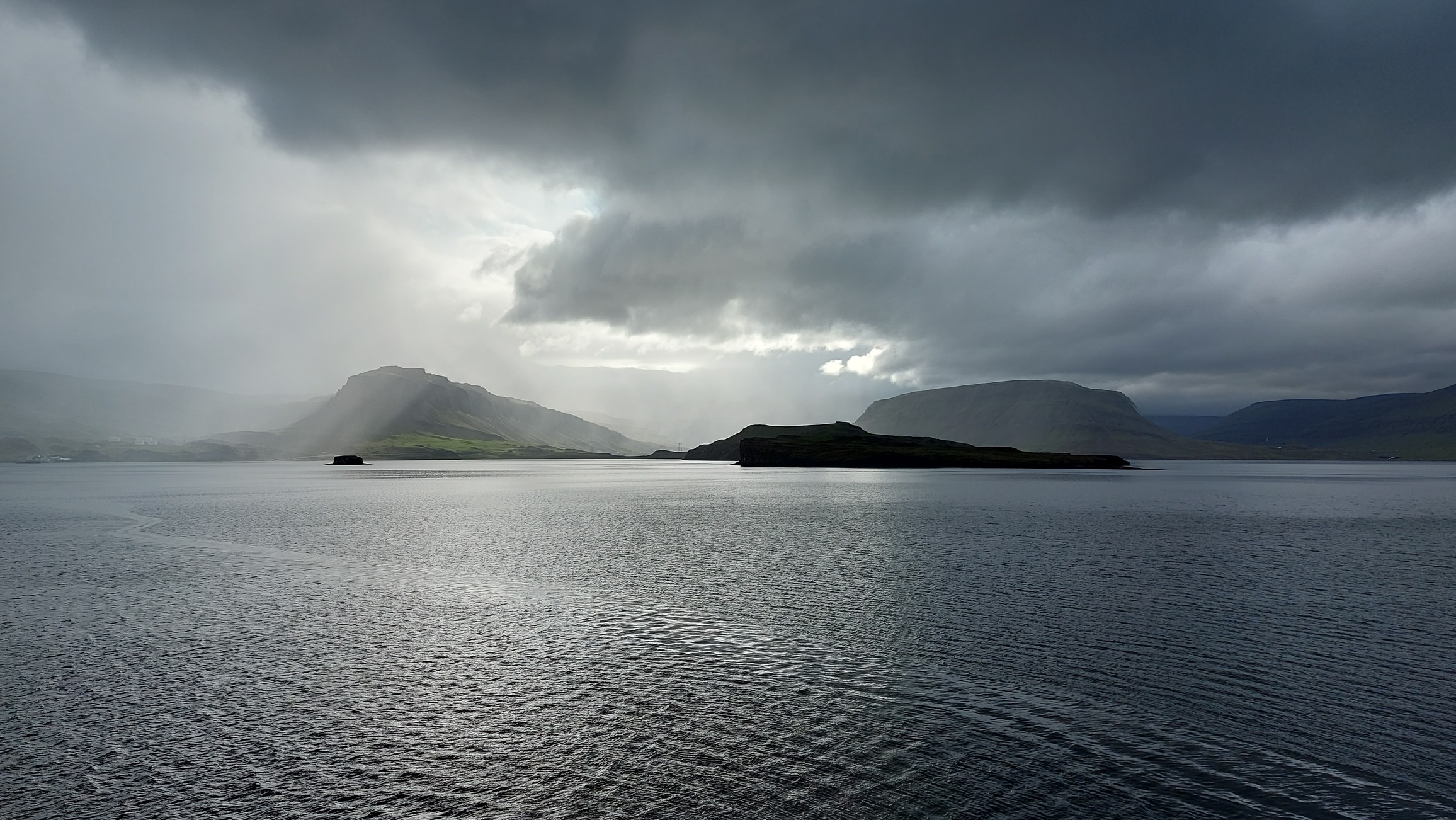27 June 2023 – How many ways can one think of to bring mud from the seabed to the surface? As many as five are applied during the DEHEAT campaign with RV Belgica, all designed in different ways but with one common goal: bringing samples of the precious mud, its inhabitants and chemical gradients, to the scientists without them having to get wet! However, avoiding them getting dirty cannot be guaranteed! Admittedly, it is better to speak of ‘sediment’ instead of mud, because technically it is not always mud that is brought to the surface. Just as one water was not the other, neither is one sediment the other.
Let’s start with the simplest low-tech method, which is usually the first sediment sampler deployed on any new sampling station during the DEHEAT campaign: the Van Veen grab (or simply the Van Veen). Once the CTD is back on board, that is. This tool is nothing more than a clamshell bucket made of stainless steel that is spread open like scissors while it is let down through the water column. The locking mechanism is released when it touches the sea bottom, making the bucket halves close and grab a sediment sample when the device is pulled back upwards.
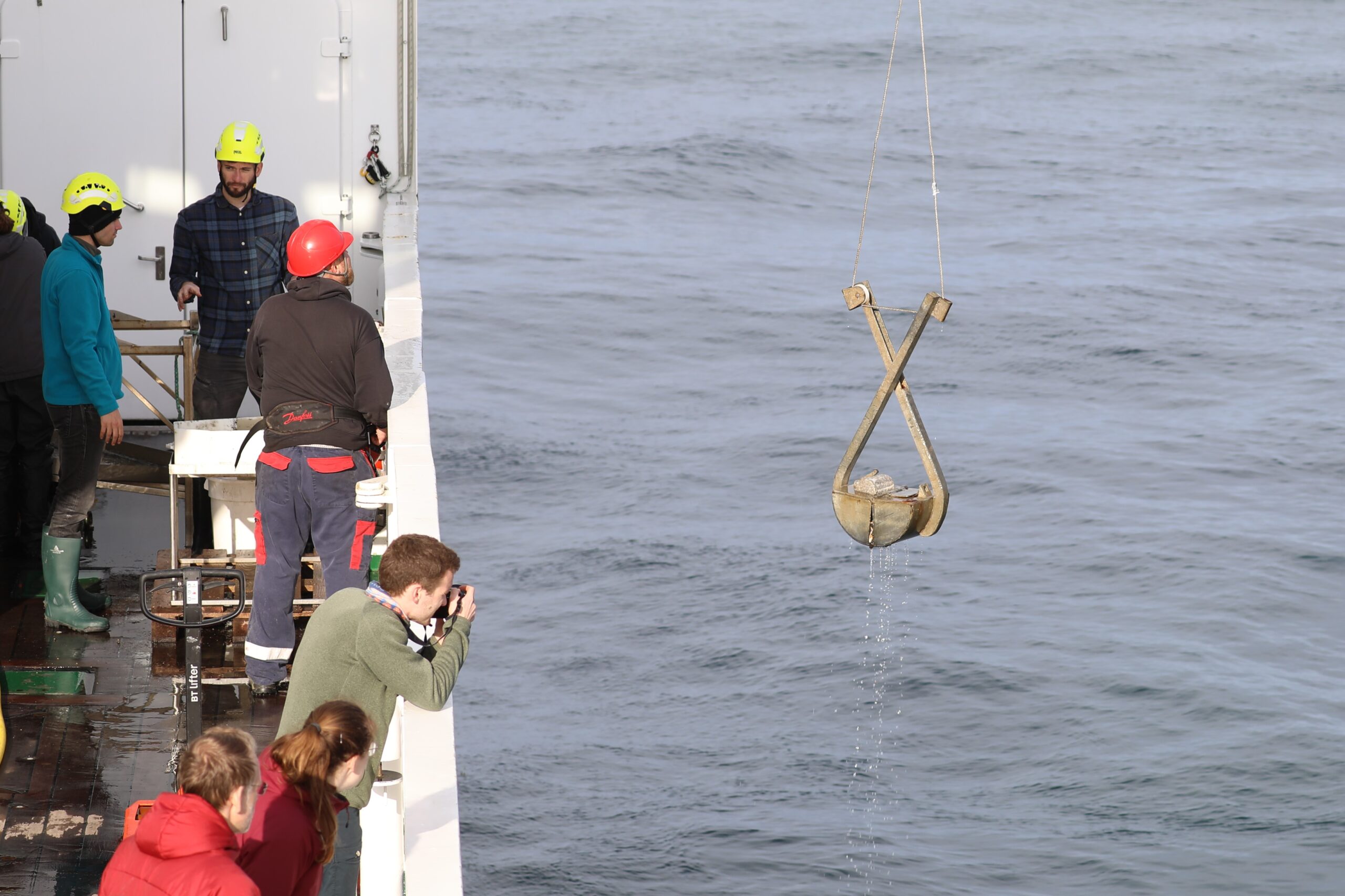
In the extended sampling scheme, a box corer is usually sent towards the seafloor when the Van Veen grabbing has been completed. This can be done once or multiple times, depending on the sampling needs. From a technical perspective, the box corer is also a rather simple sediment coring device, essentially consisting of a cylindrical core that relies on a weight to aid the cylinder to penetrate into the bottom and on a spade that seals the core from below to prevent the sample from being lost when the unit is lifted back to the surface.
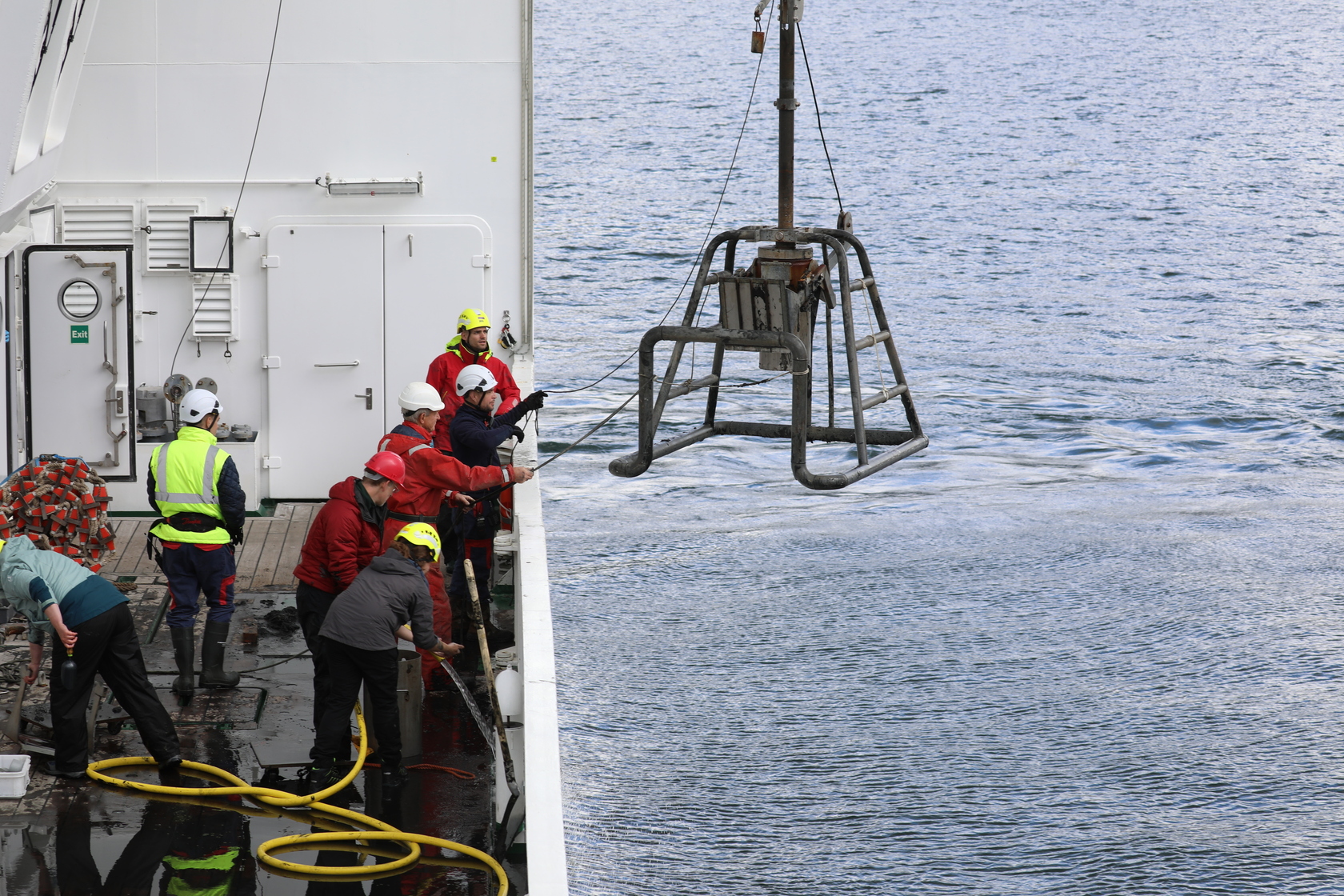
Next on the programme comes deploying the GEMAX corer. This one looks a bit like a double torpedo with wings (see photo, showing the device before it is lowered to the seafloor) where tubular sampling containers are inserted into the two cores to be taken out – hopefully filled with sediment – after retrieval.
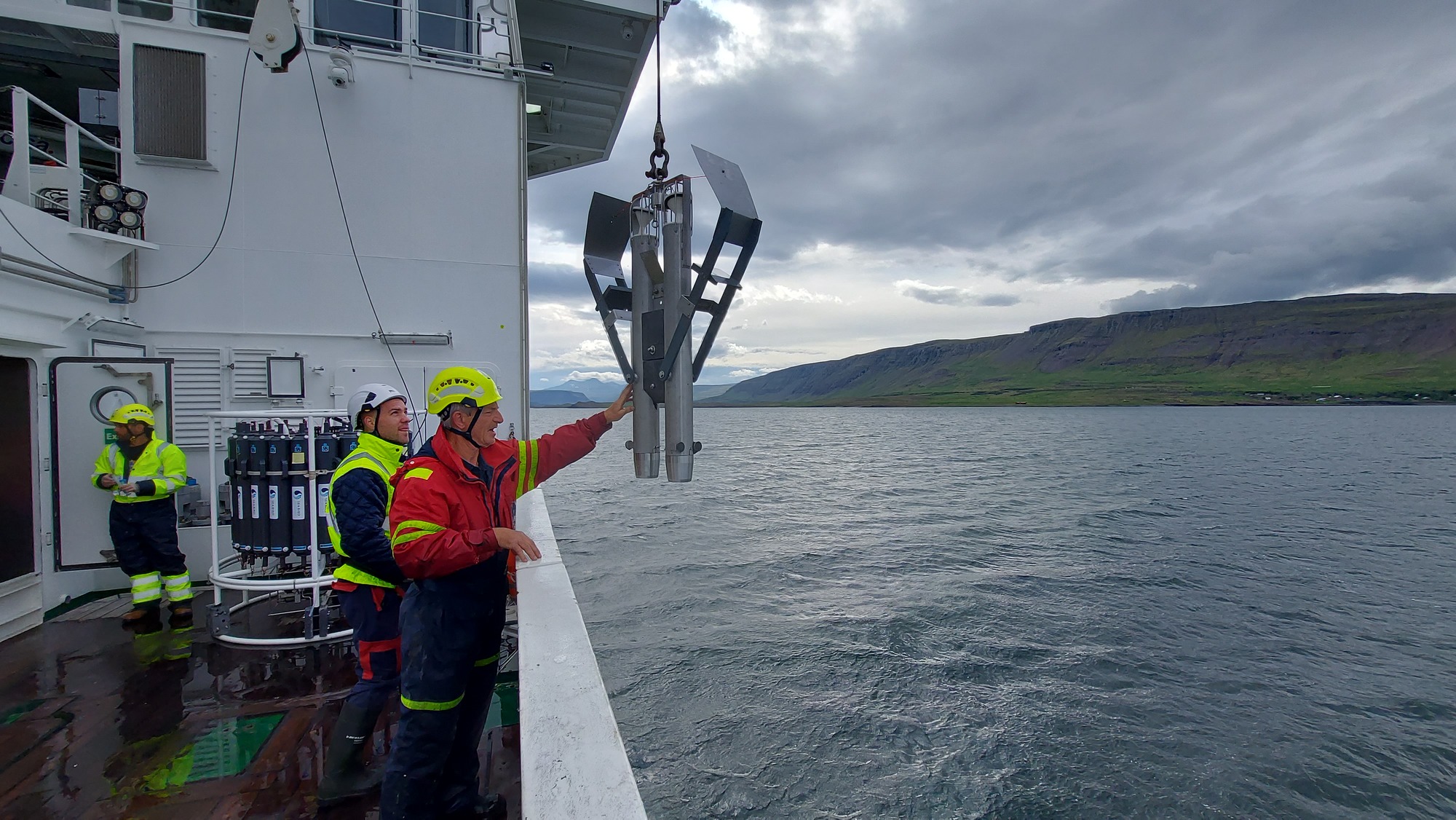
Unlike the Van Veen grab and the box corer, the GEMAX is not deployed just once or a couple of times at every sampling station, but up to 22 cores are collected per location.
Per Hall, marine biogeochemist and emeritus professor at the University of Gothenburg, explains: “The GEMAX takes more undisturbed cores and therefore delivers a more representative sediment sample than for example the box corer. The latter disturbs the sediment more, for several reasons. One is that it has a very big ‘bow wave’ which may blow away particles from the sediment surface. Also, the sediment within the box may be more disturbed, there may be cracks in it, there may be water coming between the box wall and the sediment. That is often fine, like if you’re going for fauna samples, but if you want undisturbed chemical gradients in your cores as is needed for many of the DEHEAT biogeochemical analyses, the GEMAX is a far better choice. So, the choice of corer all depends on the purpose of your sampling.”
Per is a senior academic who is not averse to dirty hands. “Although I am officially retired, I still do part-time research because I remain interested in it and excited about it. Today, I am participating in this expedition on invitation of Sebastiaan, where I try to bring my expertise in throughout the entire chain from the practical aspects of the sampling to the discussions on the data“.
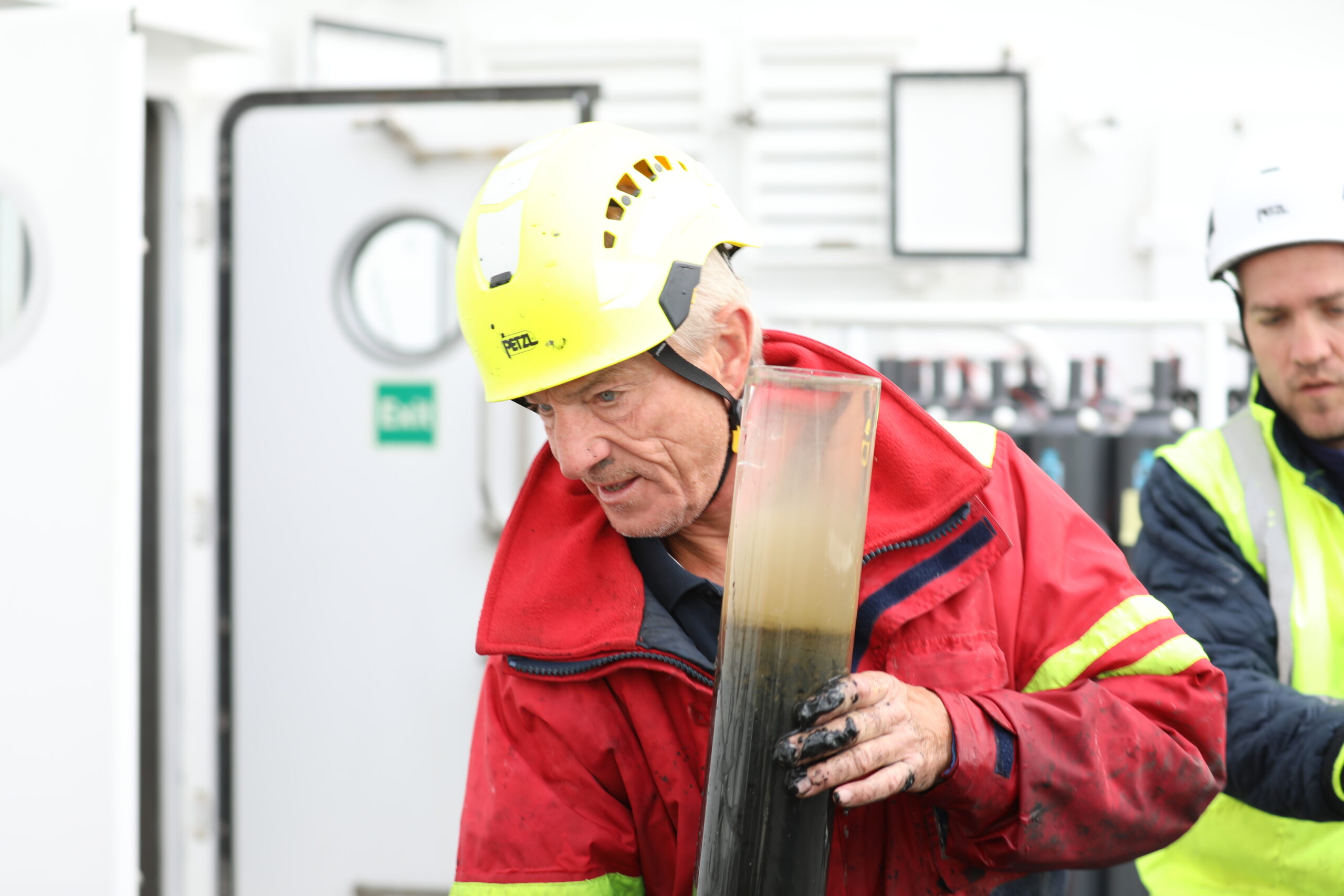
Saheed Puthan Purayil of the Royal Belgian Institute of Natural Sciences helps Per with the different sediment corers. He is a PhD in physical oceanography, and has extensive experience in ocean research, forecasting and modelling. But rolling up his sleeves was less of a part of these experiences.
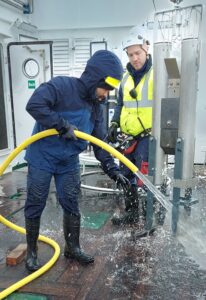
“I have been a part of many scientific expeditions at sea, and in some cases I had the position of chief scientist, but it is the first time that I am actually helping with taking sediment cores. I find it extraordinary to see how the cores are processed after we hand them over to other scientists, and how some data are already appearing during the expedition” he says.
Saheed clearly enjoys being part of the DEHEAT expedition: “It’s also a fun and engaging expedition, with scientists of so many different fields of expertise, institutes and nationalities, and a wonderful ship and crew. And everybody is very friendly!”
All the abovementioned sediment corers, as well as the CTD, are deployed over the starboard side of RV Belgica, using a crane and winch specially installed for deploying such instruments.
The CTD actually has it’s own hangar and deployment system, as you don’t want the sediments flying around contaminating the valuable water samples. Just kidding! Of course, the sediments are also handled with great care. But when hosing down the corers between sampling sessions (as even residual sediments from one sampling must not affect the next) it is not inconceivable that some sediment could get onto the CTD-rosette or into the water samples. And for the scientists carrying out the accurate and clean CTD sampling, it is also more correct and pleasant work in bad weather conditions.
Talking about the weather, we were warned that the weather in Iceland can take any form in summer too. Today we witnessed that, with alternating sunshine, clouds, fog, a gust of rain and even a flake of snow. But Hvalfjördur remained as dramatically beautiful in all these conditions!
